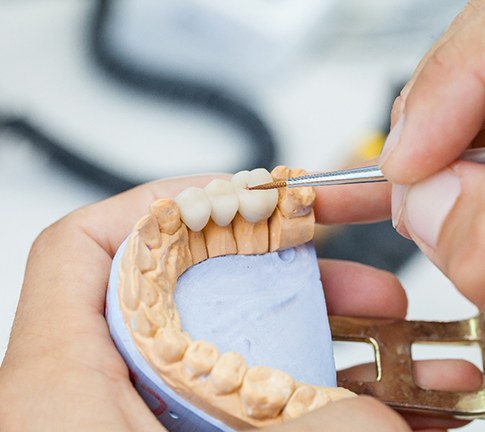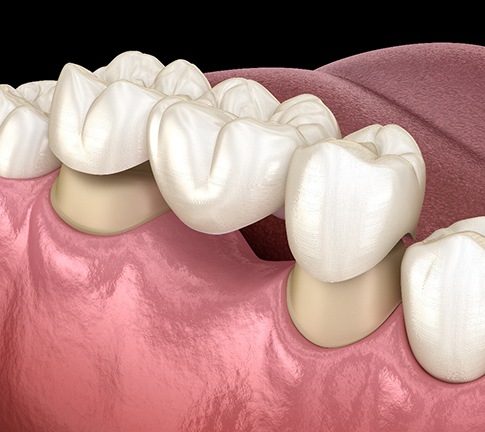Dental Bridges – Raleigh, NC
Getting Rid of Your Smile Gaps
Only missing one tooth may not seem that bad to you. The affected site is small - you can easily think it won’t do much harm. However, what if you lose several adjacent teeth? You shouldn’t downplay such an issue; it’ll ruin your health and looks if left to itself. Luckily, we at Barker, Rohner and Hunt DMD offer dental bridges in Raleigh. These devices will restore your whole grin. To learn more, read below or book a visit to our office.

What is a Dental Bridge?

Put simply, a dental bridge is a permanent appliance for your grin. It has several pieces that are put together to replace one or more teeth. To be specific, it’s usually made of dental materials fused to either side of a pontic (i.e., an artificial tooth).
The best candidates for dental bridges have lost a few adjacent teeth. After all, such patients can get their full smiles restored with just one treatment. Dental bridges lack strict requirements otherwise. Most adults in good health can qualify for them.
The Types of Dental Bridges

You must first consult our dentists before you get a dental bridge. By doing so, they’ll confirm whether the restoration suits your smile. They can then draft a custom treatment plan if it does.
Following the consultation, we’ll suggest one of two types of bridges to you. These kinds are:
Traditional Dental Bridge
As you may expect, the traditional dental bridge is well-known. It’s typically made of two dental crowns fused to either side of a pontic. Given this setup, it relies on your nearby natural teeth for support.
A traditional bridge is often less costly; it uses inexpensive materials. That said, dentists can only cement one by altering your support teeth. They’ll remove some enamel from these “abutments” before placing the bridge.
Implant Bridge
In contrast to a regular one, an implant bridge uses dental implants. These latter restorations are posts set in your jawbone. They slowly fuse with your jaw once placed, ensuring the whole bridge is secure. In other words, the final device won’t loosen or fall like other prosthetics.
Due to using implants, an implant bridge won’t alter your natural teeth. Abutments aren’t “prepped” before placing it. Still, this bridge is a bit more costly.
The Benefits of Getting a Dental Bridge

There are many benefits to getting a dental bridge. Among them, some of the most common ones are:
- A Lifelike Smile – A dental bridge blends with adjacent teeth, so it’ll give you a full and beautiful smile. Your friends and family likely won’t even know you have one.
- Straight Teeth – By filling your smile gaps, a dental bridge keeps your other teeth from tilting and falling out.
- Easy Eating – Any given dental bridge will boost your ability to chew tough food. As a result, you can enjoy a more varied diet.
- Lasting Results – On average, a dental bridge lasts for roughly 15 years. The devices can reach a lifespan of 20+ years when they’re well-maintained.
If teeth that were side by side go missing, a dental bridge may be the solution. Consider the treatment and book a consultation today!


